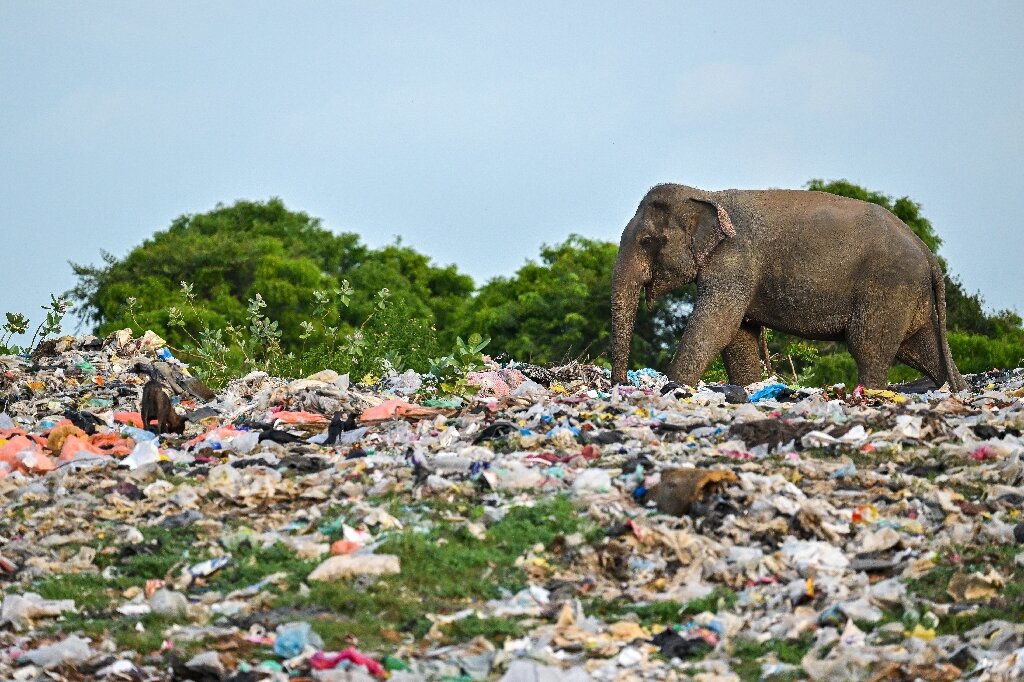Sri Lanka: about 90 per cent of plastic waste from imports ends up in landfills and the ocean
The ZeroPlastic Movement sounded the alarm. Unchecked waste disposal devastates marine and land environments, disrupting ecosystems and seriously endangering several animal species. A new thermal power plant in Kerawalapitiya is fired by solid waste; another is under construction in Karadiyana.
Colombo (AsiaNews) – Sri Lanka is facing a serious environmental crisis caused by plastic waste as 90 per cent of plastic material that comes with imported products ends up in landfills or, even worse, in the ocean. Overall, only 10 per cent of the 500,000 tonnes of plastic and related material of this waste is recycled.
The ZeroPlastic Movement, Sri Lanka's largest volunteer-driven environmental network, has raised alarm bells about the seriousness of the situation. For the group, unchecked disposal is causing considerable destruction of marine and land environments, disrupting ecosystems, and putting several animal species in serious danger.
“Around 50 per cent of plastics that the world produces are single use plastics, utilised for a few moments, yet, remain on the planet for at least several hundred years,” environmentalists and experts warn.
“In 2017, Sri Lanka was ranked fifth [in the list of countries] that release plastic and polythene waste in the ocean. Plastic waste generation in Sri Lanka is estimated at 1.59 million metric tonnes per year and mismanaged plastic is estimated at 5 per cent.”
“Sri Lanka generates 7,000 metric tonnes of solid waste per day and the Western Province accounts for approximately 60 per cent of waste generation,” said Nalinda Wijeweera and Dishni Gamage, two environmentalists who spoke to AsiaNews.
The Western Province “is the most populated region of the country and also the one with the highest production of waste. The Colombo City Council collects about 700-800 tonnes of solid waste per day, while the other suburban districts of the capital, including Dehiwela-Mt. Lavinia (DMMC), Kolonnawa (Kuc), Sri Jayawardenapura Kotte (SJKMC) and Moratuwa (MMC) collect about 350-400 tonnes of solid waste per day,” Nalinda and Dishni added.
“The most common plastic waste products are mega bottles, yoghurt cups, lunch sheets, milk packets, meal boxes, polyethylene bags, sachet packets, and wrappers.”
“Annually, 500,000 metric tonnes of total plastic (raw material and articles made of plastic, including toys) are imported to the country. 70 per cent of the imported plastic is utilised locally,” report senior officials at the Central Environmental Authority.
“Sri Lanka earns US$ 2 million in foreign exchange via imports and exports of plastics, whereas, imports are around 1.6 million metric tonnes of plastic raw materials (primary forms) and around 140,000 metric tonnes of finished goods.”
This is a major issue. “The Urban Development Authority has initiated to construct a solid waste-fired thermal power station at Kerawalapitiya,* which will use 630 metric tonnes of waste from Colombo and Gampaha suburbs to operate a 10-megawatt power station.
“A similar plant is under construction in Karadiyana which will receive 500 metric tonnes of municipal solid waste per day under the guidance of the Western Province Waste Management Authority (WPWMA). The majority of the plastic waste will be burned at these two plants in the future, although, incineration is not the best solution to plastic pollution.”
The officials note that “Sri Lanka needs strong laws and regulations to ban and restrict all non-recyclable, single use plastics and to prevent their escape into the environment, Although, majority of plastic waste is recycled, recycling alone cannot solve the issue.”
Although the government recently banned certain plastic items, there is a potential risk of illegal plastic imports because of poor monitoring, compliance, and enforcement, as well as gaps in procedures.
Overall, government programmes have not achieved the intended results for several reasons, including a lack of commitment by the stakeholders in public and private sectors.
The net result is that over the past decade, single-use plastics have killed about 20 elephants as well as other wild animals.
Plastic bags, bottles and packaging have also clogged sewers, causing flooding in urban areas , which in turn has favoured the spread of mosquitoes that breed in stagnant water, some of which can carry the potentially lethal dengue viruses.
* The Kerawalapitiya power station (Western Province) is Sri Lanka's first waste-to-energy thermal power plant, officially inaugurated on 17 February 2021.
12/01/2022 11:23
07/05/2024 11:57
23/09/2017 15:53







.png)










